|

By ZZZ and MP83
Eggerland all got started with an inaugural release for MSX computers back in 1985. That was followed with another installment for the same platform before receiving sequels for both Famicom Disk System and Famicom - all before it ever reached American shores (though Europe lucked out and got both MSX titles). The series didn't end after the NES trilogy, either. There was also a relatively little known game for the original monochrome Gameboy before the series went back to Japanese exclusivity with a couple of releases for the PC. The franchise actually lasted a full decade and a half, only being retired after a final installment in 2000.
Ever since its initial release, the trilogy of NES titles have been some of the system's most beloved puzzle games. And with such a long history to go along with them, it's kinda hard to figure out why the series has been neglected in recent years. This is especially puzzling when considering that it was made by Nintendo's second party developer Hal. Nintendo is the same company that released both a Game & Watch collection and a Balloon Fight sequel for DS, so they're not exactly one that you'd expect to just abandon a successful IP. But Eggerland was one of their longest running franchises, and it's almost like they've forgotten about the thing entirely.
Fortunately, the series has left behind nine of of the best damn puzzle games that you're ever going to find. What the series is not, however, is particularly diverse. If you recall just how similar the NES games were then you'll have an idea of how little the franchise changed with each installment. That's not to say that the puzzles themselves were all the same, though - just the opposite. They're actually some of the most remarkably well crafted puzzles in the genre. And all due to some brilliantly simple mechanics.
The Eggerland titles are those kinds of games where everything revolves around one very basic, constant concept. Each puzzle begins with Lolo inside of a small room that invariably fits neatly onto one single screen. Regardless of what exactly it was that got him there to begin with, Lolo needs to get out of whatever room he happens to be in at the time, and the only way to do that is to nab the contents of a treasure chest that's located in there with him. But to do that he has to open it first, and the only way that's gonna happen is if he grabs a bunch of tiles called Heart Framers (Diamond Framers in Eggerland Mystery) that are scattered throughout the room. But here's where it gets tricky: Lolo's not in there alone. Various monsters populate these rooms, too, and if he crosses paths with one then he's got to start the room over again - 'til he runs out of lives, at least. Luckily, sometimes grabbing a Heart Framer will grant Lolo a couple magic shots, with which he can temporarily encase said beasts in giant eggs. And the rooms themselves are veritable mazes, where a misstep can get you stuck and force you to restart.
Four of the more common monsters in the series are the snakes, the medusas, the skulls, and the dragons. The medusas will turn you to stone if you cross their path, forcing you to put something between them and Lolo for you to get past. On the other hand, the skulls won't do anything 'til after you grab the last of the room's Heart Framers - at which point, they'll chase you down. The dragons will also only wake up after you grab the last of the Heart Framers, but then they'll shoot (avoidable) fireballs in your direction if you cross their path. Then there's the snakes, who just don't do anything at all, making them nothing more than fodder for your magic shots. But what a snake can do (after it's been egg-ified) is block a medusa, a skull, or a dragon (or anything else). And therein is the real brilliance of the series. It's finding how all of the parts interact that's the real trick to solving its puzzles.
And the depth of the puzzles doesn't end there. Several of the monsters (like the armadillos, the Domo-kun look-a-likes, and the hopping lizards) are mobile at all times, adding a real-time element to many of the puzzles' solutions. And the terrain has to be given just as much consideration as the monsters. For example, a boulder will protect you from anything, but can't be moved, whereas, a tree acts the same way, except that it doesn't provide protection from medusas. By moving an egg over water you can cross single space gaps or float down current (if there is one) like you were on a raft. There's also sand (which slows down Lolo, but not the monsters), grass (which only Lolo can cross), and arrow tiles (which can't be crossed from the direction that they're pointing toward), among a couple others. Once in a while you'll find tools to help you out, namely a hammer (to break a single boulder), a bridge (to cross the water once), or an arrow (to change the direction of one arrow tile).
Most of the titles have little or no story told in-game, but there's always some kind of tale that's at least contained in the instruction manual. Each installment actually has its own plot, but the gist of what goes on over the course of the larger series is this: There's these two kingdoms, Eggerland and Eden Land. Eden Land is awesome, whereas, Eggerland sucks. The king of Eggerland - King Egger - comes to Eden Land one day and kidnaps Princess Lala, daughter of King Eden. Some craziness that makes no sense whatsoever happens, and a guy named Lolo saves the day. So then Lolo and Lala - mutually drawn to each other by their oddly similar names - get hitched and live happily ever after. But, taking a cue from King Koopa, King Egger returns many a time to kidnap the same princess and take over the same kingdom, each time having his plans foiled by the very same ultra badass that is Lolo.
Out of the ten releases (nine different games and a port) in the Eggerland franchise, only three made it to America. Europe saw three others, and Japan got all but one of them. Despite the Japanese exclusivity of several of the titles, there's no text during any of the actual puzzles, so they're all entirely playable in either language. The games are practically all the same thing, but there are still real differences between each installment. What follows is also a look at exactly how the series changed over the years from game to game.
Eggerland 2 - Meikyuu Shinwa
Adventures of Lolo
Quest of Lala
Quest of Lala
Eggerland Mystery - MSX (1985)
European Cover
But that's not all there is to Mystery. For starters, it's the only title in the entire series that rewards you with points. It also has a series exclusive "B" mode, where there's a time limit to every stage and a different scoring system. There are even five extra stages that you can reach via a special password. Lastly, it introduces one of the franchise's most obtuse elements: On rare occasions, if you place a block where a defeated monster just was then it might cause them to respawn elsewhere - this can actually be essential to solving some of the more difficult puzzles, which can be confusing, to say the least.
Eggerland 2 - Meikyuu Shinwa / Eggerland - MSX / MSX2 / Famicom Disk System (1986)
European Cover
Japanese Cover
Eggerland 2 - Meikyuu Shinwa
Even still, it's cool to have some say over which order you solve the puzzles in. It's also quite a bit more challenging than the predecessor, and assumes right off the bat that you're already familiar with how the Eggerland series works. Making it even more challenging, there are also some very esoteric puzzle solutions that are nigh-impossible to figure out without a FAQ, due to having requirements that normally don't apply to the rest of the game. It's not impossible though, as the game gives you a vague hint on the right side of the screen. You can also find four "gods" during the course of the game who will grant you the ability to use their powers (infinite ammo, super speed, etc.) in the final few puzzles. The enemies Leepers, Rockies, and Don Medusas also make their first appearance in Eggerland 2.
Interestingly, while all evidence points to Eggerland 2 having been released exclusively in Japan, it seems that the game did make its way to Europe in some capacity. However, even though the manual and box cover are translated to English, its extreme rarity and the fact that the game itself is completely unaltered suggest that this version is more likely than not an unofficial release. And if you look closely at the cartridge, the original Japanese label is hidden behind the English one, making its bootleg status all but certain. Either way, both versions play just fine on both MSX1 and MSX2 (which it was designed for) machines, though with a brown background (in place of black) and slighty more vibrant colored graphics when played on the latter. There's also a port/remake for FDS from 1987, with the title changed to just "Eggerland". This version has all of the original puzzles plus twenty-two originals (for a total of one hundred twenty-two). Plus the graphics are redrawn, the music is different, the framerate is smoother, and you can save your game, rather than having to rely on passwords. In the Famicom version, there's an opening demo of King Egger kidnapping Lala and rock-paper-scissors mini-game during the final battle, something that is entirely missing from the MSX game. The Famicom game is also the first time when players saw King Egger in the game. Before that he was only mentioned in the manuals.
Eggerland 2 - Meikyuu Shinwa
Eggerland 2 - Meikyuu Shinwa
Eggerland 2 - Meikyuu Shinwa
Eggerland (FDS)
Comparison Screenshots
Eggerland - Meikyuu no Fukkatsu - Famicom (1988)
Japanese Cover
Eggerland - Meikyuu no Fukkatsu
Eggerland - Meikyuu no Fukkatsu
There's also a magic bell that you can collect that will ring in certain pre-set rooms to let you know that there's something special hidden there (like a secret exit, for example). It's also worth noting that the game ends humorously with a playable turn-based RPG-style "battle" (it's actually impossible to lose) between Lolo and King Egger. And just like in the predecessor, some of the puzzles have highly esoteric solutions, and they're even tougher this time out. As a result, it's probably the most challenging entry in the franchise, and not exactly the best game for introducing beginners to the series.
Eggerland - Meikyuu no Fukkatsu
Eggerland - Meikyuu no Fukkatsu
Translated Ending
Eggerland - Souzouhe no Tabidachi - Famicom Disk System (1988)
Japanese Cover
Eggerland - Souzouhe no Tabidachi
Eggerland - Souzouhe no Tabidachi
Eggerland - Souzouhe no Tabidachi
|

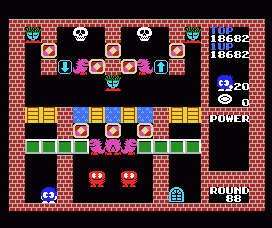
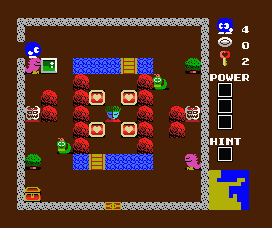

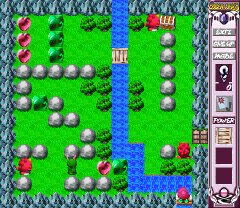
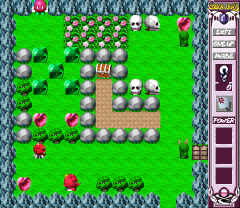
a.jpg)
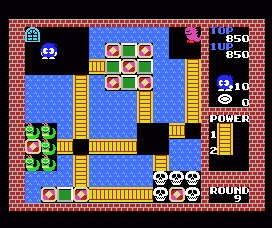
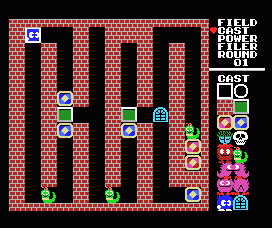
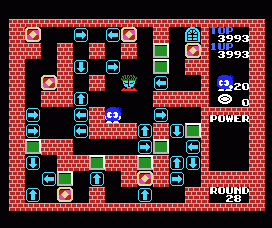
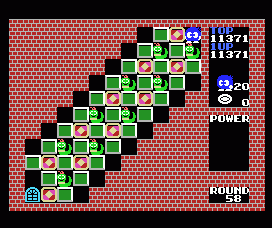
a.jpg)
a.jpg)
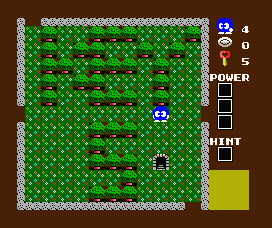
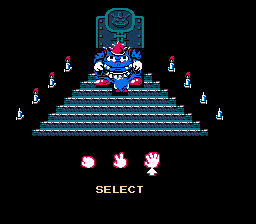
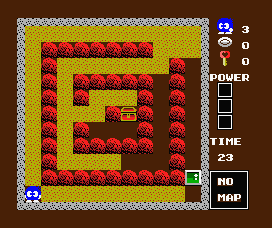
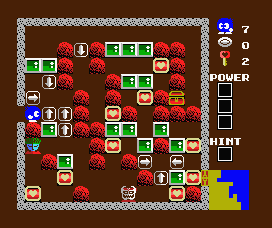
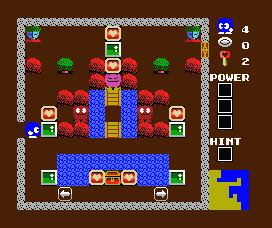

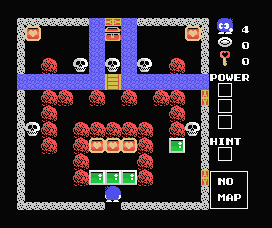


 (J)a.jpg)










 (J)a.jpg)


